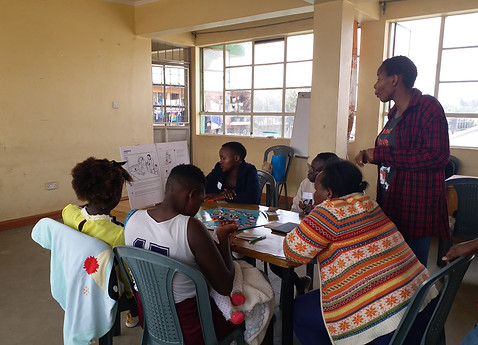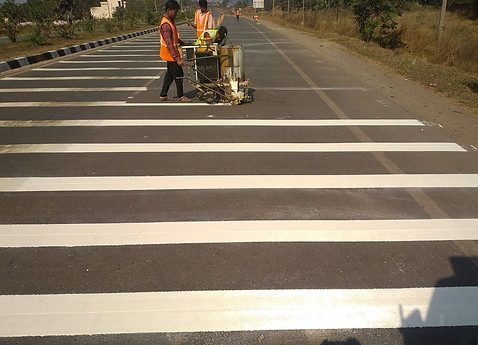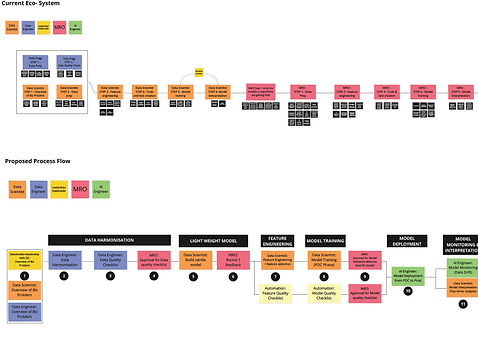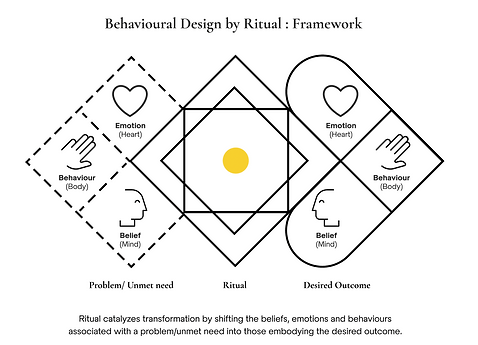
Projects
A brief overview of the various kinds of projects and contexts have been shared below. Feel free to reach to me to know more.
Behaviour Change/ Social Development
Social Vulnerability Mapping
Kenya, India

How might we better consider social and environmental vulnerabilities of pregnant women and young mothers in the design and implementation of health services?
A multidisciplinary project to identify and deepen the understanding of the social and environmental factors that can predict health risks and influence healthcare seeking and service uptake-related behaviours of families in vulnerable settings.
The goal was to enable more holistic risk-mitigation interventions for the health of vulnerable women, U5 children and their families. The geographic locations for this project are Bihar and Uttar Pradesh in India and Kenya.
Since this was a consortium project with 3 partner organizations, our role was to bring in the expertise of behaviour science to research and analyse healthcare behaviours.
Client:
Non-profit organization based in the US
Timeline:
Feb 2019- May 2020
My Role:
I was involved in all the stages of the project from planning the research details, secondary research & analysis, designing the tools for research, on-site research, synthesis& analysis, output framework and presentation until the handover to the quantitative research team.
Methodology:
1. Initial secondary research to gain more context of the project.
2. Design research on field for understanding healthcare seeking behaviours and build hypotheses.
3. Gamified scenario based research tool to validate the hypotheses.
4. Analysis and synthesis to create a vulnerability framework.
5. Integrate learnings with consortium teams.
Outcome:
A visual map that shows the different social and environmental vulnerabilities, manifestations and coping behaviours the the women face at different life stages. This learning from the map were then taken into a quantitative research phase for validation.
Social Development/ Behaviour Design
Road Safety
India

How might we improve the driver’s ability to negotiate black spots on highways to facilitate reduction of road fatalities and incidents?
According to road accident surveys, over 84% of accidents are caused due to human error, whereas only 0.3% is attributed to faulty road design. This illustrates that drivers despite being aware of safe driving practices, deviate and adhere to unsafe practices. Hence the biggest problem did not lie in lack of awareness but rather on "the awareness" not translating into action.
Drawing from neuroscience, behaviours are influenced by several non-conscious biases. Driving and other related activities are said to be largely non-conscious activities. Therefore, our approach was to design interventions that influence the non-conscious to promote the desired behavior.
The ask from the client was to research and identify driving behaviours at blackspots and develop intervention strategies to reduce accidents on highways.
Client:
A public-private partnership company in India that develops infrastructure projects in partnership with the government.
Timeline:
May 2018 - November 2020
My Role:
I was involved in all the stages of the project cycle that included coordination with client, primary/ secondary ethnographic research, analysis & hypothesis building, building intervention strategies and implementation drawings and presentations.
Methodology:
1. Ethnographic research on roads to observe driving behaviours.
2. Analysis of site accident data, dash cam videos, 360 videos and photographs of black spots.
3. Identifying behavioural principles that are driving these behaviours.
4. Design non-conscious interventions Implementation drawings
Outcome:
Intervention ideas such as Signages, road marking and other tactile feedback mechanisms that trigger the desired road behaviours. All of these were submitted as implementation drawings.
Organisational Behaviour/Systems Design
Account growth and management for Sales teams
Global

How might we drive consistent account growth and help establish ways for account leaders to grow client partnerships?
Scaling of the organization and ambitious revenue goals for the year required that the different sales and account managements teams work consistently and effectively in the same direction. The current ways of working for the different teams were not standardized and everyone was working through trial and error from their own experience. There was no transfer of knowledge amongst teams and hence ways of growing the client account was not consistent .
Our teams role was to understand how the sales and account management teams work and help them build consistency in how they look at growth and client partnership in the accounts that they are managing.
Client:
A data analytics organisation
Timeline:
July 2020 - September 2020
My Role:
I was involved in all the stages of the project that included primary research with stakeholders, analysis, ideation workshops with stakeholders, designing the framework, intervention strategy, and creation of collateral and client presentations.
Methodology:
1. Research with the different roles and teams to understand the sales and account management ecosystem.
2. Analysis and synthesis of information
3. Co-creation workshop with stakeholders
4. Ideation and intervention prioritizing
5. Roll out and testing
Outcome:
1. Framework for understanding the elements that grow client partnerships.
2. Playbook that captures all the knowledge from the lived experiences of the account managers.
3. Health Scorecard - a template to track progress of growth for the year.
4. Templates for sharing knowledge amongst teams and driving conversations.
5. Roadmap for roll out of other interventions and strategies for implementation.
Service Design/Communication Design
Re-screening for Colo-rectal cancer
North America

How might we improve the rates of re-screening for colo-rectal cancer at home?
The client had a home test kit for cold-rectal cancer which needs to be tested every 3 years, but there was very low response from patients to re-test it at the 3 year mark. None of the communications that the clients used were changing this patient behaviour. So, the aim for this project was to understand why this is happening and re-design the communication strategy and the patients experience to change this to the desired behaviour.
The target users and priority for this project were:
- Patients who have completed a test and are now overdue for re-screen or/and are presently due for re-screen.
- And the physicians who prescribe the home-test for re-screening are also target users.
We researched consumer behaviours and designed interaction (communication, patient+physician) touchpoints for improving re-screening for a colo-rectal cancer testing.
Client:
A molecular diagnostics company that works in the detection of early stage cancers
Timeline:
March 2019 - August 2019
My Role:
I was involved in all the stages of the project that included research with client stakeholders, analysis, ideation and designing the prototypes along with a behaviour scientist on the team.
Methodology:
1. Understanding the context and people through journeymapping with stakeholders
2. Identifying touchpoints for impact
3. Apply behavioral principles to design interventions
4. Incorporate feedback and submit prototypes
Outcome:
Re-designing the systems of communications collateral for patients and physicians such as content and design for re-screen letters and envelopes, sms and call reminders, re-scripting call centre communications, facts card for patients and the web portal.
Enterprise Analytics/Solution Design
ML Platform for Process Automation
Global

How might we automate the model risk governance process and scale it efficiently?
There were several challenges that the client team was facing:
-
Manual & ad-hoc process
-
Weak adherence to guidelines
-
No streamlined process of collecting and storing artifacts & associated feedback at each stage.
-
High risk of model failure in the production phase as
-
Leadership Team lacking visibility of the governance status of projects in one place
The ask was to create a new machine learning platform to address the challenges that the team was facing.
Client:
Consumer Packaged Goods Company
Timeline:
January 2021 - June 2021
My Role:
I was responsible planning the project, leading the design research and client management. The process stages included user& UX research to build wireframes for the final solution in collaboration with the data science, data engineering and business teams. We assisted the development team during implementation.
Methodology:
1. User Research with teams to understand how they work, needs and challenges.
2. Simultaneously analysis data and create sketches of process flow
3. Create screen Flow and wireframes
4. Develop and iterate the final platform with user feedback
Outcome:
UI platform powered by machine learning.
Enterprise Analytics/ Solution Design
Power BI Platform for reporting
North America, Canada

How might we build a user-centric, centralized & automated reporting platform for the client teams
There were several challenges that the client team was facing:
-
Everyone was working in silos with no visibility to other teams, uses different reports and systems to manage and work on
-
No means of accurately assessing business health across portfolio
-
Need to effectively handle grooming data and drive advanced analytics
The ask was to understand the different needs and challenges from the users and create an integrated platform for all their working needs.
Client:
Consumer Packaged Goods Company
Timeline:
May 2021 - Novemember 2021
My Role:
I was responsible planning the project, leading the design research and client management. The process stages included user& UX research to build wireframes for the final solution in collaboration with the data science and business teams. We assisted the development team during implementation.
Methodology:
1. User Research with teams to understand how they work, needs and challenges.
2. Simultaneously analysis data create process and data flow diagrams of the working ecosystem.
3. Ideate and Create screen Flow and wireframes for the solution.
4. Develop and iterate the final platform with user feedback.
Outcome:
Integration of the existing tools and scaling the analytics for a consumer product category team.
Behaviour Change/ Toolkit Design
Behavioural Design by Ritual
India

How might we use Rituals to create adaptive behaviours in an organizational context?
A behaviour design studio wanted to develop unique ways of influencing adaptive behaviours in a workplace context. We explored the concept of a ritual and how it influences behaviour. A detailed study was conducted to understand how rituals play out in different scenarios in personal and work contexts.
All this information was synthesized to create a methodology and toolkit for behaviour change at a workplace.
The link to the toolkit can be found here: Download the Toolkit
Client:
A behavioural design studio based in Bangalore, India
Timeline:
August 2023 - September 2023
My Role:
The studio wanted design a toolkit to understand how Rituals
influence behaviors and how they can be implemented in an
organizational context to influence behaviour change.
Methodology:
1. We conducted primary research with participants from different walks of life such as life coaches, gymnast, Military Colonel, designers,Corporate leaders to understand how they understand and use rituals in their personal and work lives.
2. Analysis and insight generation.
3. Framework and toolkit creation.
Outcome:
A Toolkit based on insights . This can be used by individuals and organizations to design and implement a ritual at their workplace.